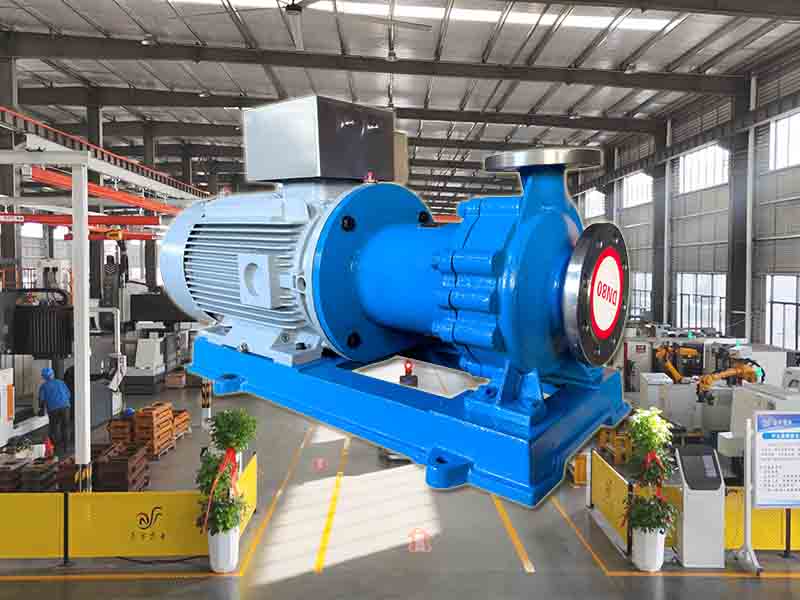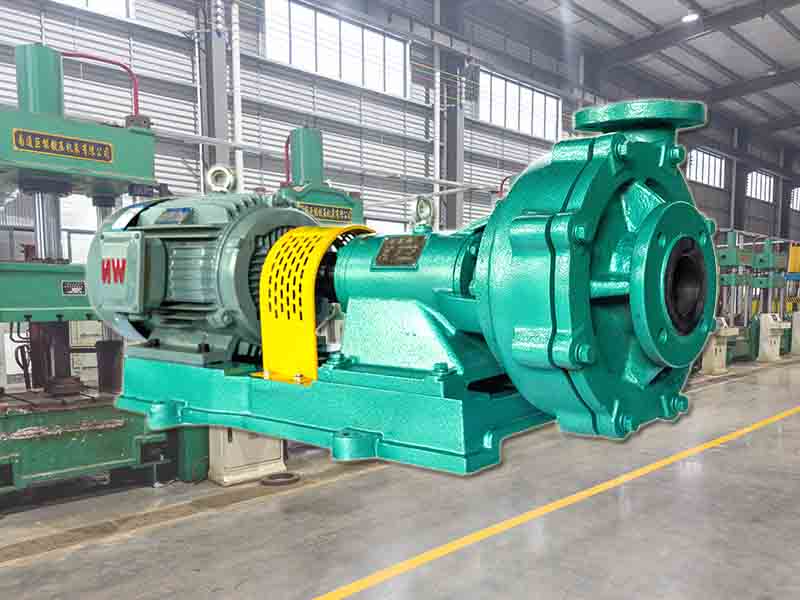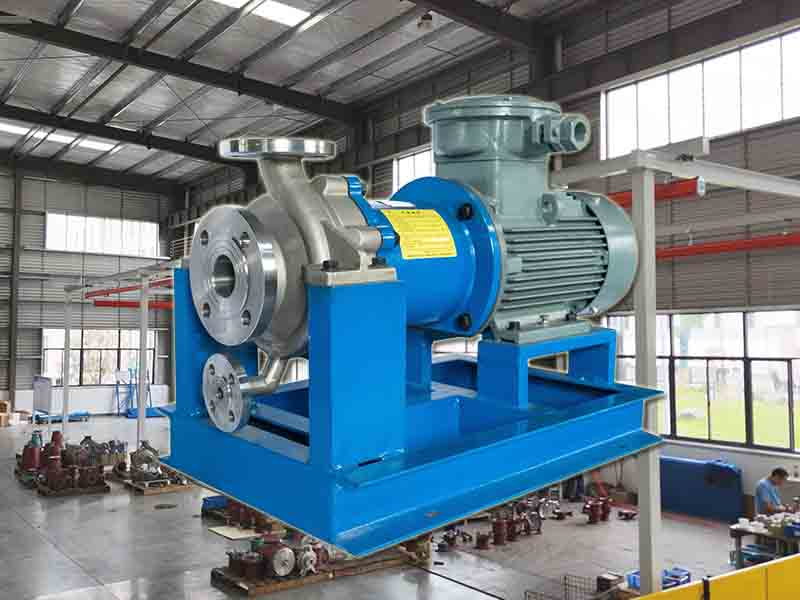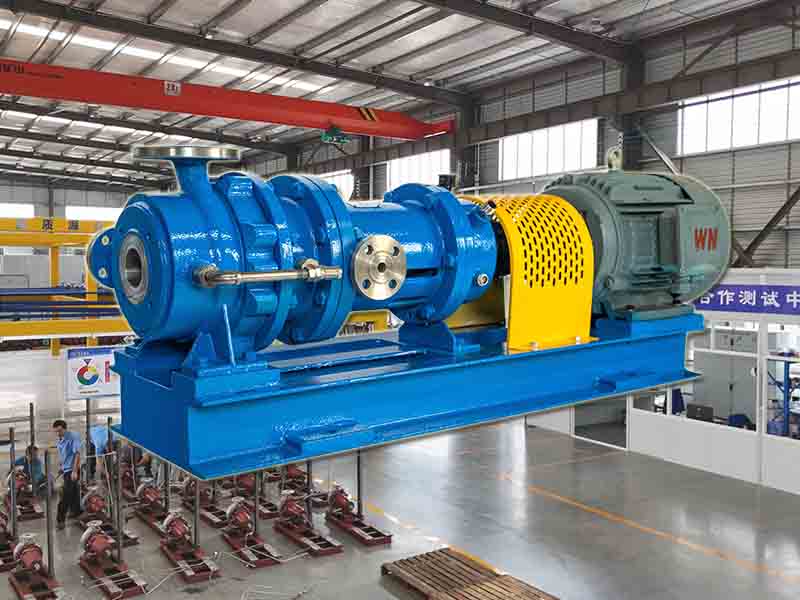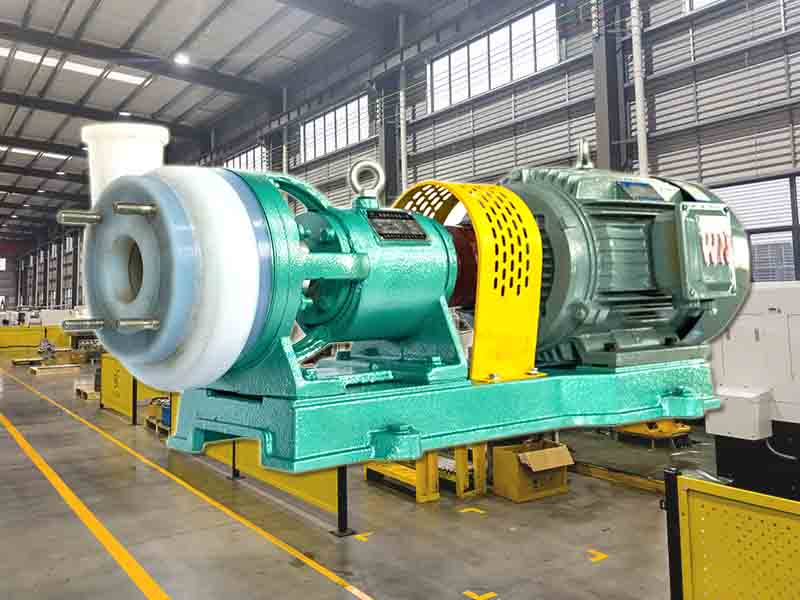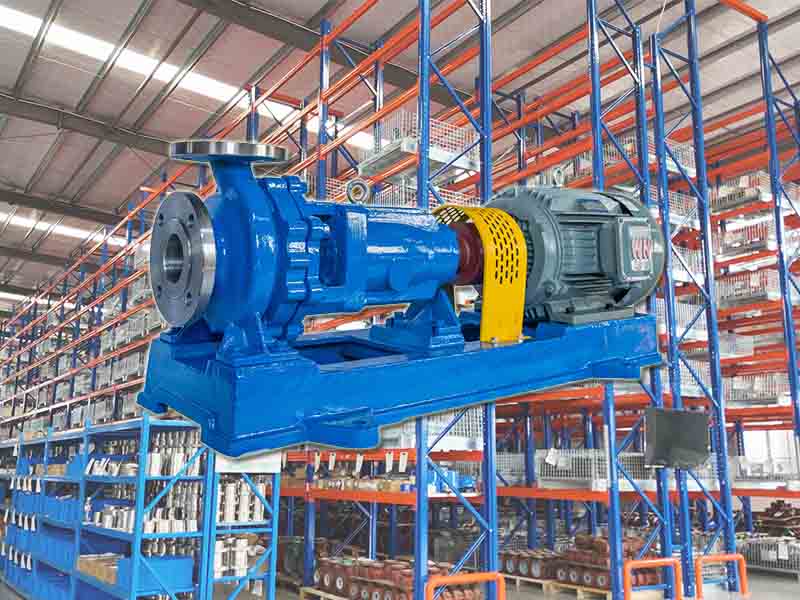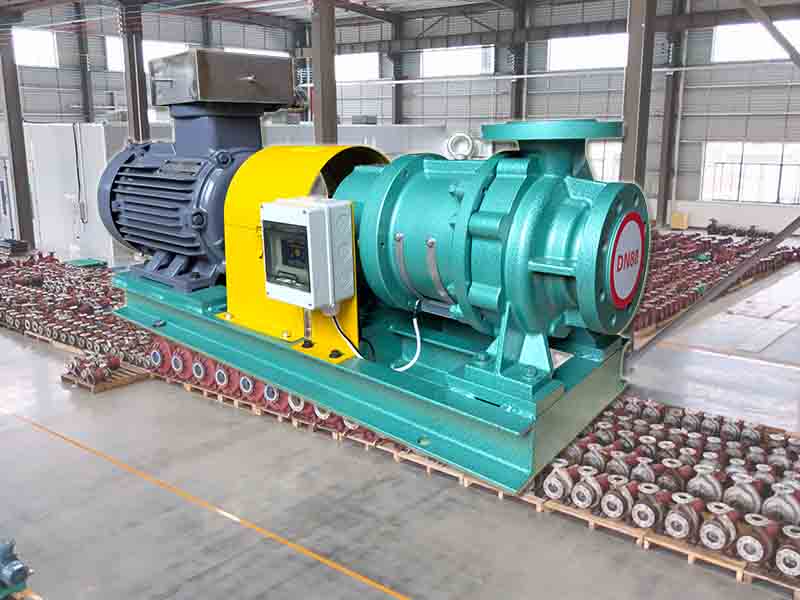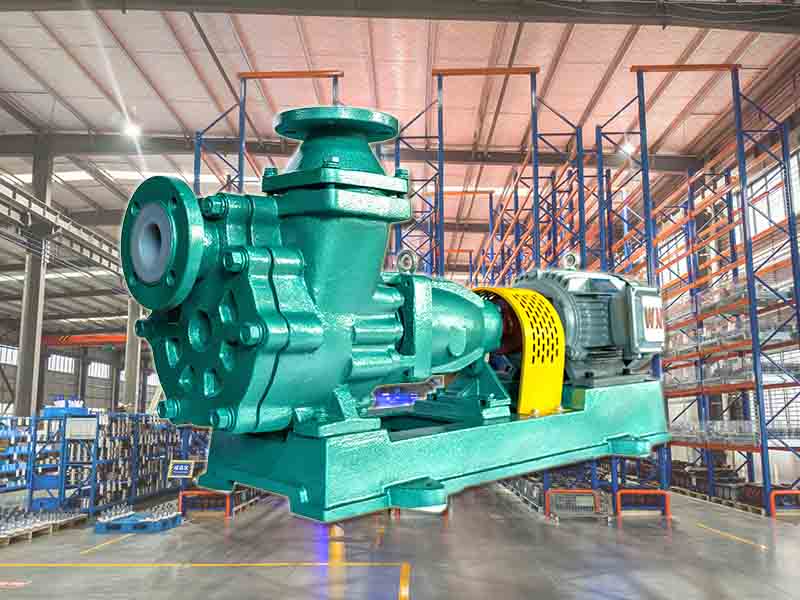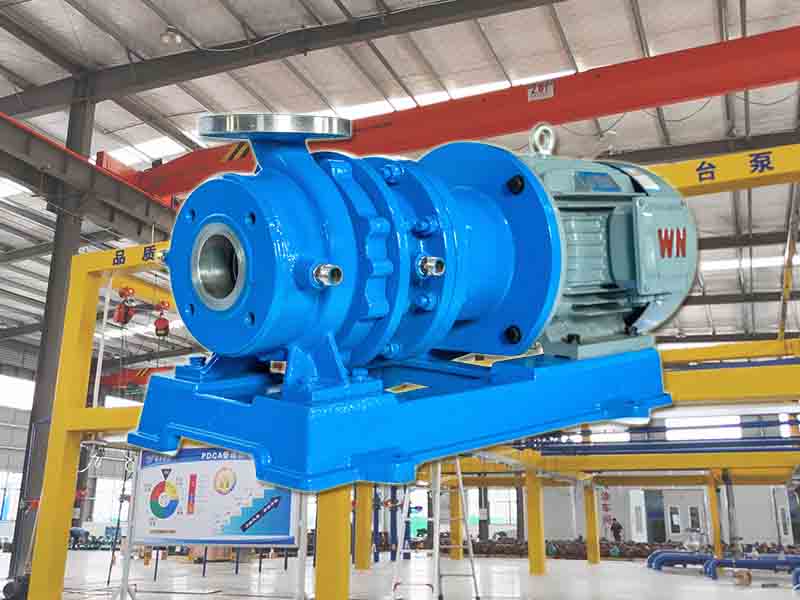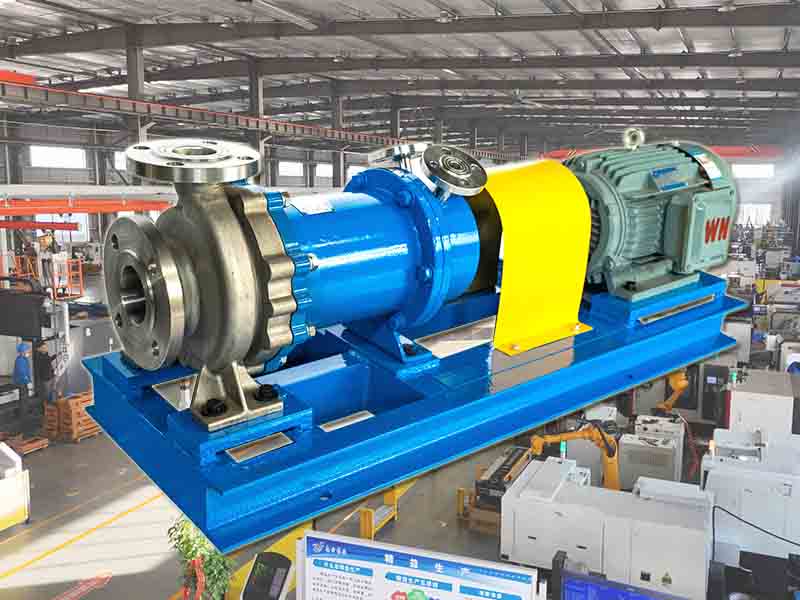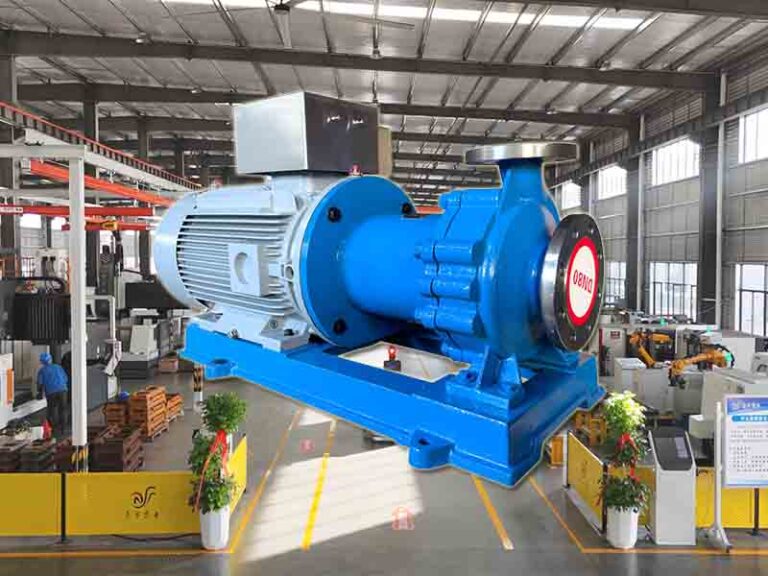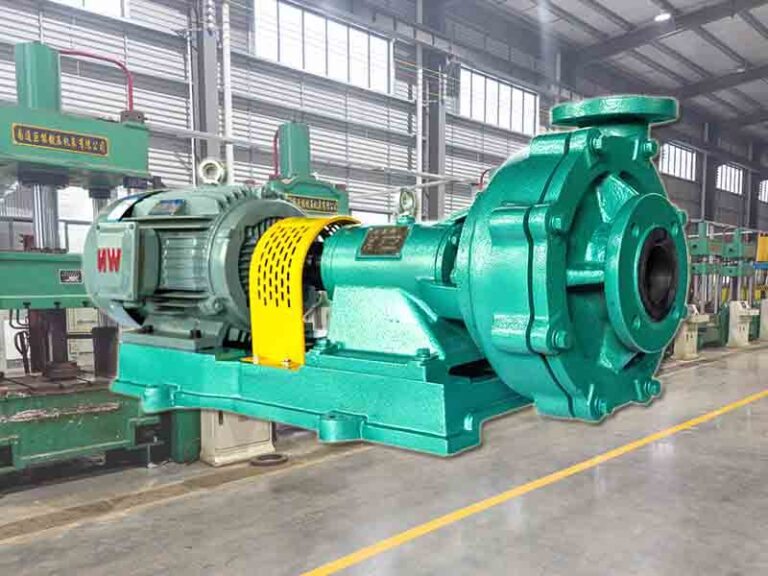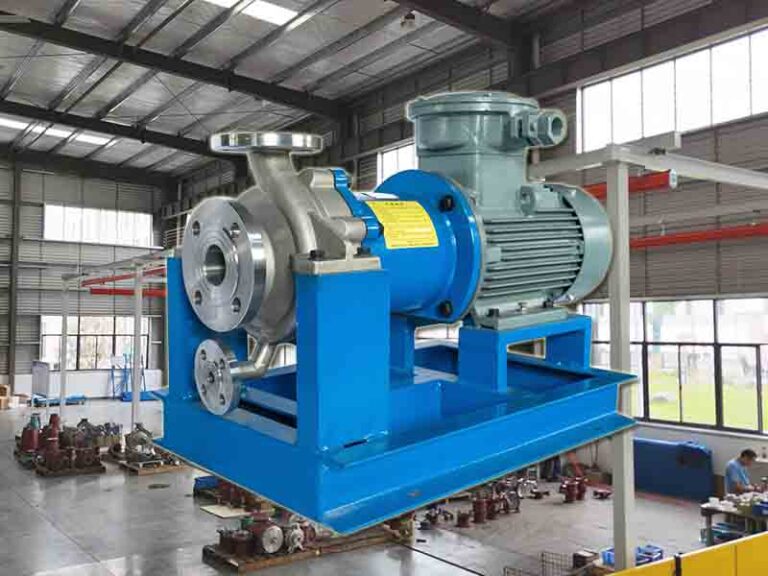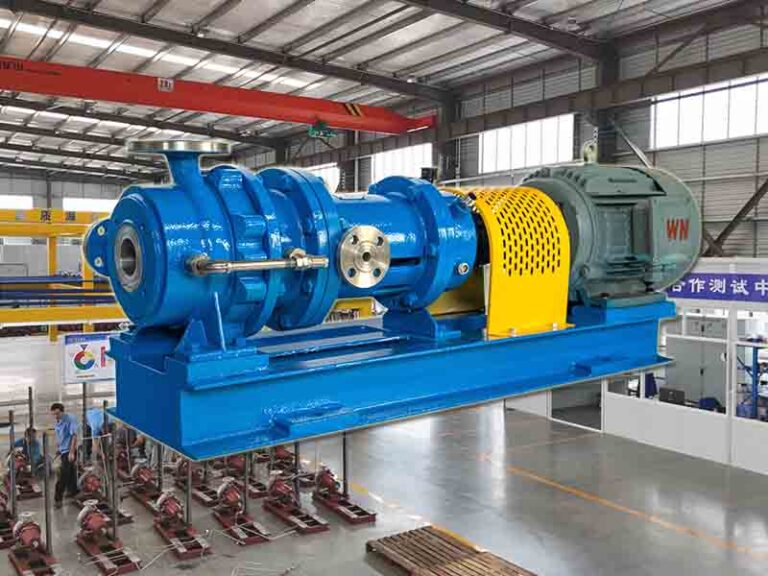Deadheading is a silent killer of centrifugal pumps, leading to overheating, pressure buildup, and potential pump failure. When the pump runs without fluid flow due to a closed valve or blockage, it enters a dangerous state that can cause severe damage to key components like seals, bushings, and impellers. In this article, we explore what deadheading is, why it is difficult to detect, the risks it poses, and the best ways to prevent it through monitoring and safety mechanisms.
What is dead-heading a pump
Centrifugal pumps in the operation process , sometimes there will be a special situation, that is, dead-head. what is dead-head it? Simply put, when the centrifugal pump outlet valve is closed, or pipeline blockage, resulting in no liquid can flow smoothly through the pump body, the pump will enter the dead-heading state.
With the centrifugal pump‘s continued deadhead, the liquid inside because it has been stirring, and the pump’s various components constantly friction, collision, the temperature began to rise constantly high. And the speed of this warming is quite fast it, the liquid in the pump so churning and churning to go, slowly will occur state changes, into steam.
Once the steam generated, that can be a problem. Magnetic pumps like bushings, mechanical seals of these key components, they can not stand such high temperatures it, in the high temperature “torture”, will begin to appear a variety of problems, such as cracks, serious time, the pump can be completely broken, no way to work normally again.
Not only that, centrifugal pump deadheading time, that there are a lot of security risks it. Because the pump has been running, the energy is still constantly inside the input , but the liquid does not flow out, these energies are accumulated in the pump in the liquid, the pressure will get bigger and bigger, if it reaches a certain level, may cause an explosion it, the consequences can be too serious .
Why Deadheading is Difficult to Detect
It is not easy to know whether the pump is dead-heading. Why do you say that? Because when the pump is in the dead-heading state, the liquid level in the pump is actually relatively stable, and it will not change significantly. Therefore, the water level sensor we usually use is useless at this time.
So how can we know whether the acid-resistant pump is dead-head? There are two ways to help us determine the motor load. One is to measure the motor current and the other is to measure the input power.
When the leak-free pump is deadhead, in order to maintain operation, it will try to absorb more current and then convert this current into useful motor load. However, before the motor load reaches 50%, the motor current is basically maintained in a similar range of values, and the change is very small. Therefore, it is difficult for us to find out any abnormality in the pump through the change of the current value.
But monitoring the input power is different. It is a “powerful assistant” in judging whether the corrosion-resistant pump is deadhead. This is because there is a close connection between input power and motor load, and input power increases linearly with changes in the motor load range. Even small power changes can help us keenly detect changes in motor load that are not easy to detect. Especially when the load is light, the accuracy of detecting motor load changes through input power is 10 times higher than that through motor current detection.
The Dangers of Deadhead Pumps
Overheating problem
We mentioned earlier that when the pump is dead-heading, the liquid cannot flow normally and can only be trapped in the pump. As the pump continues to run, the temperature of the liquid will rise. And the temperature rises very quickly, which can easily cause the pump to overheat as a whole.
Once the alkali-resistant pump is overheated, various performances will be affected. For example, the sealing parts may deform at high temperatures, the sealing effect will deteriorate, and leakage is likely to occur. Some metal parts of the pump will also lose strength and become more susceptible to damage if they are in a high temperature environment for a long time.
High pressure accumulation
As long as the pump is running, regardless of whether there is normal liquid delivery, the pressure inside it will continue to increase. But at this time, the outlet is closed, the liquid cannot get out, and the pressure can only accumulate in the pump. It’s like a balloon, blowing air into it all the time, but not letting the air out, then the balloon will definitely become more and more bulging, and it may burst in the end.
The same is true for the pressure inside the ethanol pump. It accumulates more and more. Over time, the pressure on the pump parts that were originally good is getting greater and greater, and it is easy to be damaged. For example, the impeller of the pump may be deformed or broken because it cannot withstand the high pressure. There is also the sealing part. The high pressure may directly break through the seal, causing the seal to fail. In this way, the liquid in the pump will leak out, and the entire pump will not be able to work normally.
Energy waste
When the Chemical pump is working normally, the energy consumed is used to transport the liquid to where it is needed, which is doing useful work. But when the pump is in an deadheading state, it is different. Although it is also consuming energy, the motor is still turning. But in fact, the liquid is not transported out, which is equivalent to wasting effort. Long-term deadheading wastes a lot of energy, which not only increases costs, but also fails to achieve actual working results.
How to Protect Your Pump from Deadheading
If our sealless centrifugal pump is installed in a system where deadhead may occur from time to time. Then we must take some effective protection measures for the chemical pump in advance, otherwise the pump will be too easy to have problems.
There is a very practical way, which is to connect a return pipe from the outlet pipeline of the plastic magnetic pump and connect this return pipe to the supply source of the pump. The size of this return pipe must be selected appropriately. It should not be too large or too small. It is necessary to ensure that there is enough water flow through the pump so that the liquid in the pump can circulate. In this way, the heat generated by the alkali-resistant pump during operation can be taken away in time to avoid excessive heat accumulation, thereby preventing the pump from being damaged due to overheating.
In addition, in addition to preventing deadheading, centrifugal pumps must also pay attention to preventing cavitation caused by overspeeding. When overspeeding, the speed of the pump will become very fast, which will make the current become very large, and the motor will easily overheat due to excessive current. To ensure that the pump outlet has appropriate flow resistance and avoid overspeed operation, you can install a throttle valve or orifice plate immediately downstream of the pump outlet. They are like two “small checkpoints” that can control the flow rate and flow of the liquid, making the pump run more smoothly and safely.
How Is It Found During Testing
Flow monitoring
If you want to know whether the fluoroplastic centrifugal pump is dead-heading, flow monitoring is a very important means. We can install flow sensors at the inlet and outlet of the pump. These two sensors can always keep an eye on the flow situation and then transmit the monitored data back in real time.
If one day, the flow sensor finds that the flow rate suddenly becomes zero, it means that there may be a problem. It is very likely that the pump has entered an dead-head state. At this time, the sensor will trigger an alarm to remind us to check the pump quickly.
In addition to the flow sensor, there is another way to help us indirectly judge the flow state, that is, to use a differential pressure transmitter. The differential pressure transmitter can measure the pressure difference between the inlet and outlet of the pump. Because when the liquid flows normally, there is a certain difference in the pressure between the inlet and outlet, and this difference will remain in a relatively reasonable range. If the pressure difference measured by the differential pressure transmitter becomes particularly high, it means that the pump may be in a dead-heading state.
Pressure monitoring
It is also a good idea to install a pressure sensor at the outlet of the chemical centrifugal pump. It can monitor the changes in the pressure at the outlet in real time. When the stainless steel centrifugal pump is operating normally, the outlet pressure will remain in a relatively stable numerical range. If the detected pressure continues to rise, it means that the magnetic centrifugal pump is likely to be in a dead-head state, and measures must be taken immediately.
In addition, we can also install a pressure relief valve in the system. If the internal pressure in the self-priming pump exceeds the safety threshold and reaches a more dangerous level, the pressure relief valve will automatically open to release the excess pressure to ensure the safety of the high-temperature centrifugal pump. Moreover, while releasing the pressure, it will also trigger an alarm to remind our operators to come and check the situation and deal with the problem in time.
Temperature monitoring
Temperature monitoring should not be ignored either. We can install a temperature sensor in the explosion-proof pump body or the liquid in the pump, so that we can grasp the temperature changes in real time. During normal operation, the temperature of the pump and the liquid will be maintained in a reasonable range without too much fluctuation. But if the pump starts deadheading, the temperature will rise rapidly. So once the temperature sensor finds that the temperature rises very quickly, it is likely that the pump is dead-heading.
Power monitoring
Power monitoring is also an important method to determine whether the leak-free magnetic pump is dead-heading. We can monitor the current consumption of the pump motor. If the current suddenly drops, or remains at a stable value without any normal fluctuations, it may be that the centrifugal pump is deadheading.
In addition to monitoring the current, a power analyzer can also be used to monitor the changes in the power consumption of the magnetic chemical pump. The power analyzer is even more powerful, as it can analyze the power change trend more carefully and accurately. It can be used to determine whether the leak-free centrifugal pump is operating normally. If the power change is abnormal and does not conform to the normal working rules, it is likely that the pump is deadheading, and we have to further check the cause.
Vibration analysis
It is also necessary to install a vibration sensor on the pump body, which can monitor the vibration of the centrifugal pump. When the pump is operating normally, the vibration has a certain regularity and will remain in a relatively stable state. But if the pump is deadheaded, the internal operation of the pump will become abnormal, and this abnormality will be reflected in the vibration. The vibration pattern will become strange, and it may suddenly increase or become chaotic. At this time, it means that the centrifugal pump is likely to be in a deadheading state, and we must quickly check to see if there is a problem with any part of the pump.
Conclusion
Preventing deadheading is essential to prolonging the lifespan of centrifugal pumps and ensuring safe, efficient operation. By implementing proper monitoring methods—such as flow, pressure, temperature, power, and vibration analysis—you can detect and mitigate deadhead conditions before they lead to costly damages. A well-designed system with safety measures like pressure relief valves and bypass lines can safeguard your pumps, improve energy efficiency, and enhance operational reliability.
